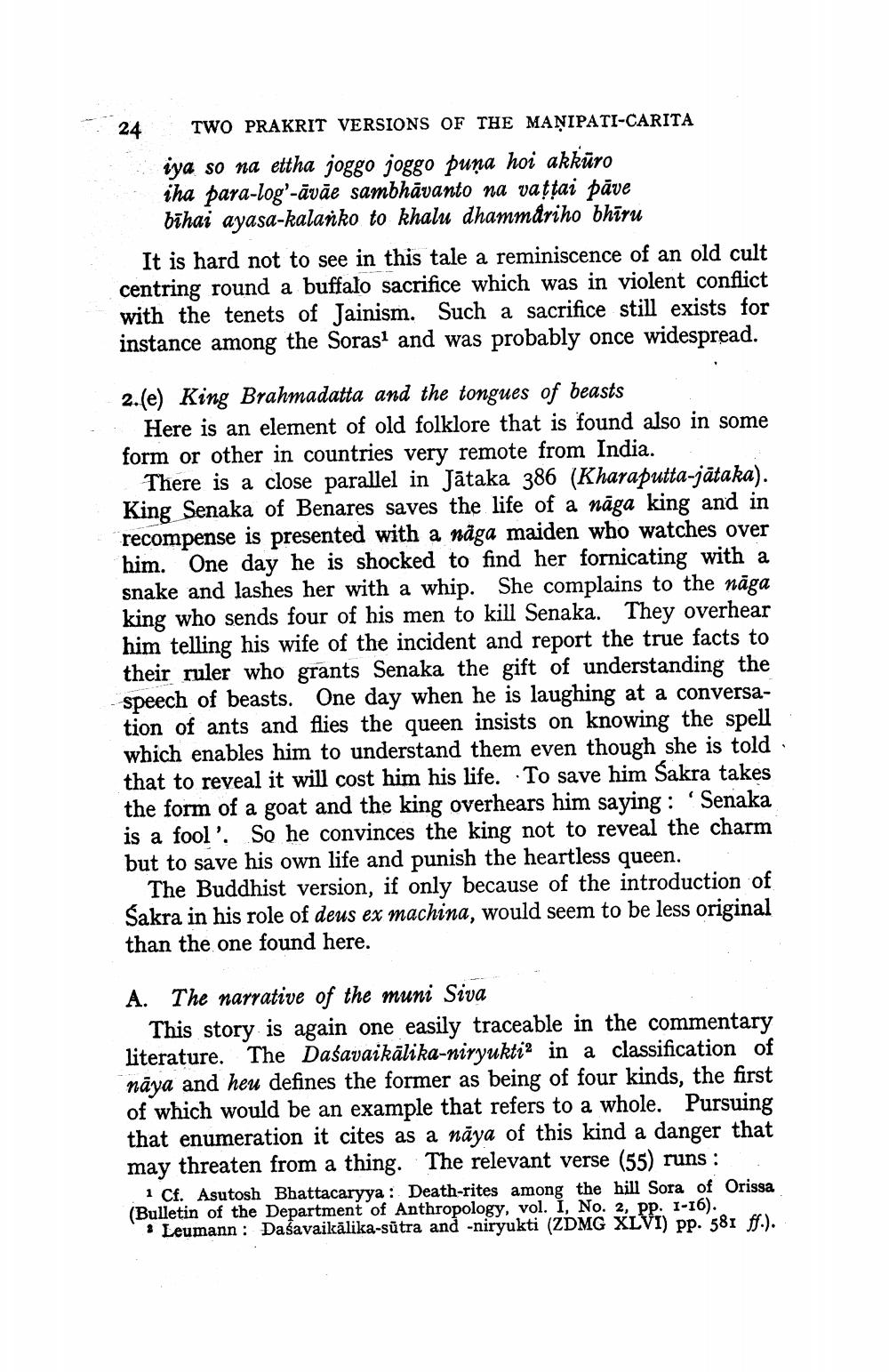________________
24TWO PRAKRIT VERSIONS OF THE MAŅIPATI-CARITA
iya so na ettha joggo joggo puņa hoi akkūro iha para-log'-āvāe sambhāvanto na vațțai pāve
bīhai ayasa-kalanko to khalu dhammariho bhīru It is hard not to see in this tale a reminiscence of an old cult centring round a buffalo sacrifice which was in violent conflict with the tenets of Jainism. Such a sacrifice still exists for instance among the Soras! and was probably once widespread.
2.(e) King Brahmadatta and the tongues of beasts
Here is an element of old folklore that is found also in some form or other in countries very remote from India.
There is a close parallel in Jātaka 386 (Kharaputta-jätaka). King Senaka of Benares saves the life of a nāga king and in recompense is presented with a någa maiden who watches over him. One day he is shocked to find her fornicating with a snake and lashes her with a whip. She complains to the nāga king who sends four of his men to kill Senaka. They overhear him telling his wife of the incident and report the true facts to their ruler who grants Senaka the gift of understanding the speech of beasts. One day when he is laughing at a conversation of ants and flies the queen insists on knowing the spell which enables him to understand them even though she is told that to reveal it will cost him his life. To save him sakra takes the form of a goat and the king overhears him saying: Senaka is a fool'. So he convinces the king not to reveal the charm but to save his own life and punish the heartless queen.
The Buddhist version, if only because of the introduction of Sakra in his role of deus ex machina, would seem to be less original than the one found here.
A. The narrative of the muni Siva
This story is again one easily traceable in the commentary literature. The Daśavaikālika-niryukti2 in a classification of nāya and heu defines the former as being of four kinds, the first of which would be an example that refers to a whole. Pursuing that enumeration it cites as a nāya of this kind a danger that may threaten from a thing. The relevant verse (55) runs :
1 Cf. Asutosh Bhattacaryya : Death-rites among the hill Sora of Orissa (Bulletin of the Department of Anthropology, vol. I, No. 2, pp. 1-16).
* Leumann: Dašavaikälika-sūtra and -niryukti (ZDMG XLVI) pp. 581 ff.).




